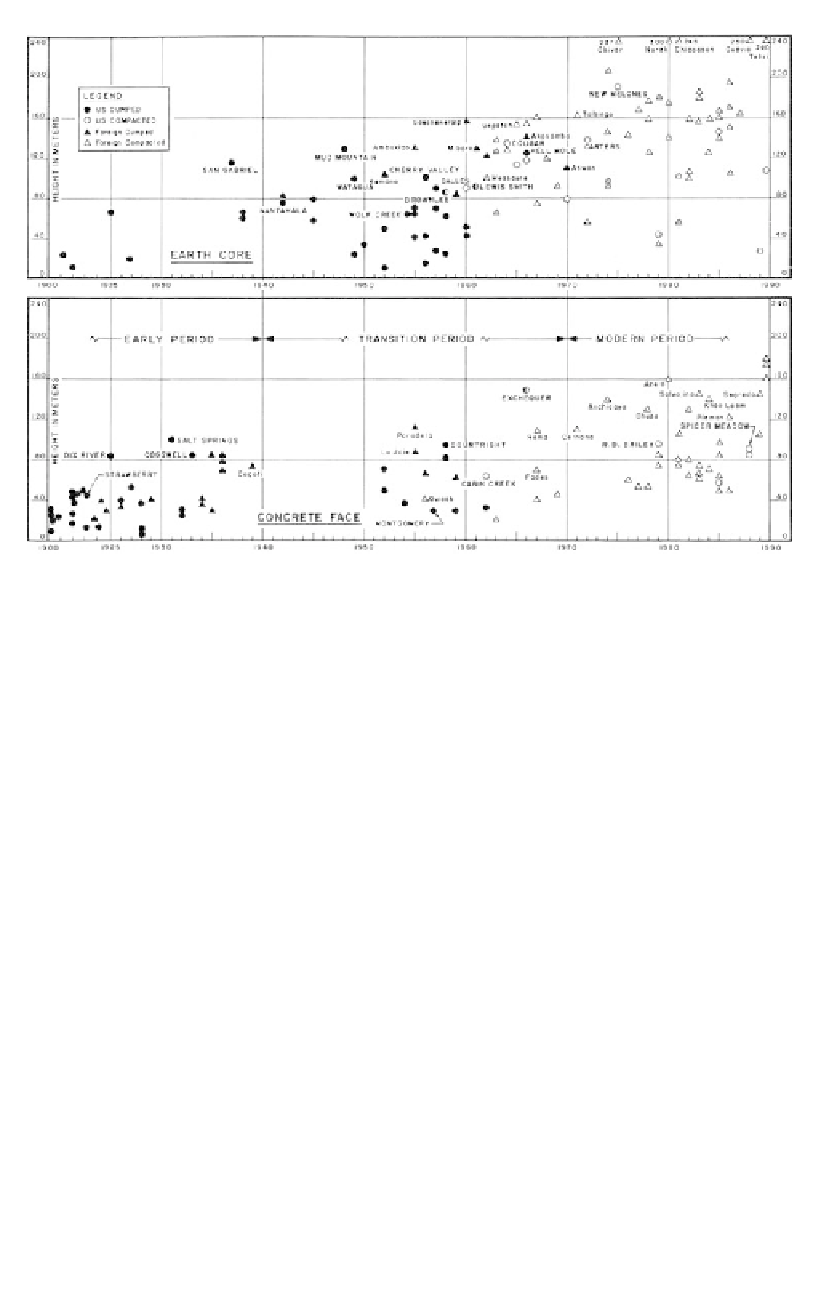Environmental Engineering Reference
In-Depth Information
Figure 15.4.
Trend in the height and compaction of CFRD (Cooke and Strassburger, 1988).
15.1.3
Site suitability, and advantages of concrete face rockfill dams
CFRD are suited to dam sites with a rock foundation and a source of suitable rockfill. In
many cases CFRD will be a lower cost alternative than an earth and rockfill dam. This is
discussed in Sherard and Cooke (1987), and Fitzpatrick et al. (1985). Factors, which may
lead to CFRD being the most economic alternative, include:
- The non availability of suitable earth fill;
- Climate. CFRD are suited to wet climates, which may give short periods in which
earthfill can be placed. This can result in significant overall savings in schedule;
-Grouting for CFRD can be carried out independently of embankment construction,
which may result in savings in overall time for construction;
-Total embankment fill quantities are likely to be smaller and side slopes steeper for
CFRD than for earth and rockfill dams leading to reductions in the cost of fill and diver-
sion tunnels.
Sherard and Cooke (1987) indicate that the cost of the concrete face is often less than
the additional costs of earthfill and filters and more extensive foundation treatment for
earth and rockfill dams. This has commonly been the case in Australia where a significant
proportion of major dams built after 1985 have been CFRD.
Sherard and Cooke (1987) point out that CFRD have generally been used for dams of
moderate height (40 m) or higher. They suggest that CFRD may also be economic for
lower dams if they have a long crest length because:
- the cost of foundation treatment for a long, low dam is high relative to the overall cost, but
will be less for CFRD, because the CFRD requires a smaller width to be treated, than for
earth and rockfill;

